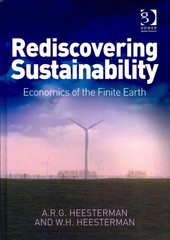Question
Which of the following about impacts of Deng Xiaoping's 'Southern Tour' in 1992 is INCORRECT? a. As seriously stressed by Deng, the Southern Tour also
Which of the following about impacts of Deng Xiaoping's 'Southern Tour' in 1992 is INCORRECT?
a.
As seriously stressed by Deng, the Southern Tour also significantly resolved the corruption issue and reduced economic inequality in China.
b.
The whole nation, not just SEZs, was opened to trade and investment with the rest of the world (with some notable exceptions).
c.
The reforms of SOEs and Opening-up policies were resumed and even promoted.
d.
Deng's southern tour saved China's capital market and protected the two stock exchanges in China: the Shanghai Stock Exchange (since Nov 1990) and the Shenzhen Stock Exchange (since Dec 1990).
MST24 Which of the following statements about Household Responsibility System is INCORRECT?
a.
Leasing a collective's land and dividing the obligatory procurement quotas to individual households in the collective.
b.
Full official recognition was given in late 1981, when 45% of the collectives had already been dismantled.
c.
By 1984, nearly all rural household had switched to household farming, and real income in farm households rose by 60% since 1978.
d.
Started secretly in Hubei province in 1978, partly as a response to a once-in- a-century drought in Hubei.
2.From early 1980s to 1990s, a list of former socialist countries initiated economic reforms e.g. opening-up policies to engage in more international trade, privatization of government-owned enterprises, etc. In contrast with Russia using a 'shock therapy' (or 'big bang approach'), China changed to a market economy gradually. Which of the following statements about the comparisons between 'shock therapy' and gradual approach is CORRECT?
i). 'Shock therapy', as the term is usually defined by economists, was not sufficient to obtain a critical mass of marketization in Russia in the 1990s.
ii). In contrast with Russia's failure to attract foreign investment, the availability of cheap labour, together with stable macroeconomic policies, have made China an attractive investment destination.
iii). China's market reforms have resulted in a decrease in direct government intervention. Compared to China, governmental intervention in Russia remains high during 1st decade of reforms.
iv). Overall, economic freedom in China is higher than Russia.
a.
i, ii, iv
b.
ii, iii, iv
c.
i, iii, iv
d.
i, ii, iii
MST26 Which of the following Pillars from Global Competitiveness Index is NOT REASONABLY WELL done by China?
a.
Business dynamics- the private sector's capacity to generate and adopt new technologies and new ways to organize work, and administrative rules that allow firms to enter and exit the market easily.
b.
Financial system- the availability of credit, equity, debt, insurance and other financial products, and the stability, namely, the mitigation of excessive risk-taking and opportunistic behaviour of the financial system.
c.
Innovation capacity- the quantity and quality of formal research and development; the extent to which a country's environment encourages collaboration, connectivity, creativity, diversity and confrontation across different visions and angles; and the capacity to turn ideas into new goods and services
d.
Skill - The general level of skills of the workforce and the quantity and quality of education.
MST27 Suppose the nominal exchange rate is 1 AUD = 0.75 USD and a burger costs 5 AUD in Australia. Which of the following statements is CORRECT?
a.
The real exchange rate should be: 0.75*5/3.75 = 1 (one burger in Australia can be exchanged for one burger in the USA).
b.
If the actual price of a burger in the U.S is 3 USD, so the real exchange rate = 0.75*5/3 = 1.28, Australian dollar (its nominal exchange rate) is over-valued.
c.
If Purchasing Power Parity (PPP) theory holds, the burger should cost 5/0.75 = 6.67 USD in the U.S.
d.
If the actual price of a burger in the U.S is 4 USD, so the real exchange rate = 0.75*5/4 = 0.93, Australian dollar (its nominal exchange rate) is over-valued.
only need the answer
Step by Step Solution
There are 3 Steps involved in it
Step: 1

Get Instant Access to Expert-Tailored Solutions
See step-by-step solutions with expert insights and AI powered tools for academic success
Step: 2

Step: 3

Ace Your Homework with AI
Get the answers you need in no time with our AI-driven, step-by-step assistance
Get Started


